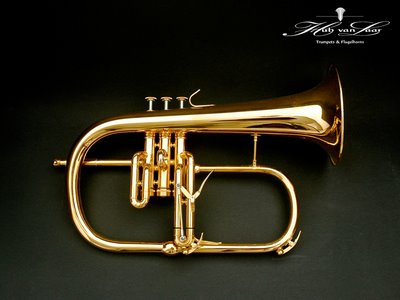The Beauty And The Beast & A Beauty Again
Thursday, December 11, 2008
Flügelhorn, translates into English from the German as wing horn. Purportedly the instrument was used on the battlefield to summon the flanks, or wings, of an army.

After the performance of the Arts Club Theatre Company production of Disney's Beauty and the Beast directed by Bill Millerd at the Stanley I could not move from my seat. I allowed the much younger audience, including many children and one boy, I know for a fact is 4, to leave. I then waited at the lobby while Rosemary munched on grapes. I was on the lookout for the cool looking Henry Christian. When I saw him I simply asked, "Can you show it to me?" He took me up to a room and opened a case. Inside was the most beautiful red-gold coloured flugelhorn I have ever seen.
The flugelhorn (also spelled fluegelhorn or flügelhorn) is a brass instrument resembling a trumpet but with a wider, conical bore. Some consider it to be a member of the saxhorn family developed by Adolphe Sax (who also developed the saxophone); however, other historians assert that it derives from the keyed bugle designed by Michael Saurle (father), Munich 1832 (Royal Bavarian privilege for a "chromatic Flügelhorn" 1832), thus predating Adolphe Sax's innovative work.
I have seen and heard Christian play the trumpet with the Vancouver Opera Orchestra. But last night, besides the trumpet, he played a flugelhorn. The sound is unmistakable. My first taste for the flugelhorn was in 1962 when I ran home with much anticipation from a record store in Mexico City with a copy of Miles Davis's Sketches of Spain and heard it played with a Harmon mute. After that I bought records with Art Farmer, Chet Baker, Maynard Furguson and Thad Jones. All played the flugelhorn and, yes! (no Chuck Mangione).
I am sure that the children had a great time with that marvelous revolving castle, scary electric-eyed wolves, beautiful costumes, pleasant songs and the S&M performance of "dom", Gaston (Jonathan Winsby) and his "sub", the ever suffering LeFou, (Vincent Tong) who kept slipping on a banana.
We adults, Rosemary and I, enjoyed the first rate performance of singers and actors of this production which features a dance of tankards to end all dance of tankards, a cancan with human spoons and knives, and plenty of leg and saucy cleavage, courtesy of Monique Lund who plays Babette. In less political times she (Babette) would have been called a nyphomaniac. I am glad they (nymphomaniacs), while endangered, are still about.
But as good and charming (and so wholesome, too!) as Belle (Amy Wallis) was, and also her partner the Beast played by Steve Maddock, my eyes followed the crazy antics of Lumiere (a walking candle stick) played by Matt Palmer and the 3cPo(esque) performance of Daniel Arnold, below right, as Cogsworth the talking and ticking, and walking clock. After seeing Arnold in the Arts Club production of Poster Boys I can assert I would go to any play with Arnold in it.

The tone of the flugelhorn is "fatter" and usually regarded as more "mellow" and "dark" than that of the trumpet or cornet. The sound of the flugelhorn has been described as approximately halfway between a trumpet and a horn, whereas the cornet's sound has been described as approximately halfway between a trumpet and a flugelhorn. The flugelhorn has a similar level of agility to the cornet but is more difficult to control in the high register (from approximately written G above the staff), where in general it "slots" or locks onto notes less easily. It is not generally used for aggressive or bright displays as both trumpet and cornet can be, but tends more towards a softer and more reflective role.
But at the end of the night, musical director (and keyboards) Bruce Kellett and his band (Graham Boyle, percussion, Henry Christian, trumpet/flugelhorn, Ken Cormier, keyboards, Neil Nicholson, trombone, and Sasha Niechoda, keyboards) made my day with a sound that was much bigger than the sum of its parts. I had a short chat with Henry Christian after he showed me that flugelhorn. I noted the extremely low and sonorous notes that could not possibly be that of a normal tenor trombone. Trombonist Neil Nicholson plays the tuba and the bass trombone, too. Could he have brought one of those along? It seems not. Nicholson managed to hit those very low notes (the monster was usually doing scary things) and at the same time play very high sounds that blended with the lower and mellower Christian flugelhorn.
A virtuoso performance by the trombonist, the rare and lovely sound of a flugelhorn all add up to an exciting evening for both jaded adults and a respite for children from iPods, computers and special effects.
With both It's a Wonderful Life and Beauty and the Beast , Artistic Managing Director Bill Millerd has assured our city of a continuing Vancouver Christmas tradition for all ages. Let's hope somebody tells him soon of the existence of the Easter Bunny.
The image of the flugelhorn came from the beautiful site of musician and composer Erik Veldkamp
For those wanting to take children note that there are various matinees and some early evening performances until the play closes January 4, 2009. Look here.






